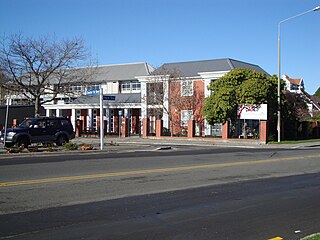
The Cathedral Grammar School is an independent, Anglican preparatory day school in Christchurch, New Zealand. The school is situated on a site covering two blocks in mid-Christchurch next to the Avon River and adjacent to Hagley Park, which it uses for its playing fields. It is in close proximity to Christ's College, the Canterbury Museum, the Christchurch Art Gallery and the Christchurch CBD.

Christchurch Central City or Christchurch City Centre is the geographical centre and the heart of Christchurch, New Zealand. It is defined as the area within the Four Avenues and thus includes the densely built up central city, some less dense surrounding areas of residential, educational and industrial usage, and green space including Hagley Park, the Christchurch Botanic Gardens and the Barbadoes Street Cemetery.

John Anderson was the second Mayor of Christchurch in New Zealand 1868–1869, and a successful businessman. He had a close connection with three buildings that have later received Category I heritage registrations by Heritage New Zealand. Two of these buildings were demolished following the February 2011 Christchurch earthquake.

The Press Building, located in Cathedral Square in Christchurch, was the home of The Press between 1909 and February 2011. The building, designed in the Perpendicular Gothic style, was registered with the New Zealand Historic Places Trust as a Category I heritage item, with the registration number 302. It suffered significant damage in the February 2011 Christchurch earthquake, with one staff member killed in the collapsed top floor. The building was demolished in July and August of 2011.
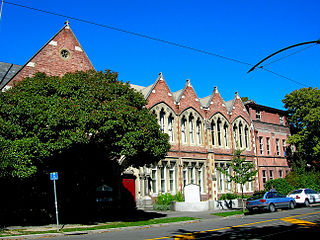
The Cranmer Centre was a historic building in Christchurch, New Zealand. Its original use, until 1986, was as the Christchurch Girls' High School, the second high school for girls in the country. Registered with the New Zealand Historic Places Trust as a Category I heritage building, it was purchased by Arts Centre of Christchurch Trust in 2001, and demolished in May 2011 following the February 2011 Christchurch earthquake.
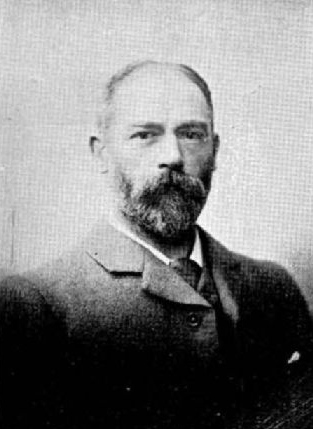
Armson, Collins and Harman was an architectural firm in New Zealand. It was founded by William Barnett Armson (1832/3–1883), and after his death, became the practice of two architects who articled with him, John James Collins (1855–1933) and Richard Dacre Harman (1859–1927).

Clarendon Tower was a high rise building on Worcester Street at Oxford Terrace in the Christchurch Central City, New Zealand. Built on the site of the former Clarendon Hotel, the façade of the historic building was kept in the redevelopment and was protected by the New Zealand Historic Places Trust as a Category II heritage structure. Following damage from the February 2011 Christchurch earthquake, the 17-storey building has been demolished.

Mona Vale, with its homestead formerly known as Karewa, is a public park of 4 ha in the Christchurch suburb of Fendalton. The homestead and gate house are both listed as heritage buildings with Heritage New Zealand (NZHPT). The fernery and the rose garden, and pavilion with the setting of the park along the Avon River, add to the attractiveness of the property. It is one of the major tourist attractions of Christchurch.

St Paul's Church was a heritage-listed former Presbyterian church in Cashel Street, Christchurch. Built in 1877, the church was registered by the New Zealand Historic Places Trust as a Category I heritage building. Following the February 2011 Christchurch earthquake, the building was removed from the heritage list and demolished.
William Barnett Armson was an architect, surveyor, engineer in colonial New Zealand. A co-founder of the Canterbury Association of Architects, and an architect to the provincial government, he established the architectural firm of Armson, Collins and Harman in 1870, which remained active until 1993. It was one of the two oldest architectural firms in New Zealand. His most important work was the Bank of New Zealand building in Dunedin.
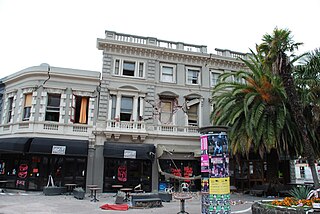
The Excelsior Hotel in 120 Manchester Street, Christchurch, originally the Borough Hotel, in recent years known as Excelsior Backpackers or New Excelsior Backpackers, was a Category I heritage building in central Christchurch. It was designed by then most prominent architect, William Armson, and was one of the few remaining examples of his work in the city. It was heavily damaged in the February 2011 Christchurch earthquake, and all but its western façade was demolished after the earthquakes. The remaining part was demolished in April 2016.
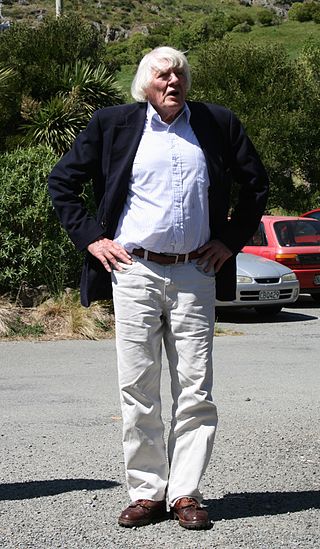
Peter Jamieson Beaven was a New Zealand architect based in Christchurch, who lived for his last few months in Blenheim. He was a co-founder of New Zealand's first heritage lobby group, the Civic Trust.

City Mall is the main pedestrian mall in the central city of Christchurch, New Zealand, comprising two sections of Cashel Street plus the Bridge of Remembrance and one section of High Street. It is also known colloquially as Cashel Mall. The Bridge of Remembrance was pedestrianised in 1976. The main mall was closed to traffic on 11 January 1982 and formally reopened as a pedestrian mall on 7 August, but it was not until 1992 that the entire mall was paved. The mall was redeveloped between 2006 and 2009, and track was installed for an expansion of the heritage tram network.

TheTrinity Church or Trinity Congregational Church designed by Benjamin Mountfort, later called the State Trinity Centre, is a Category I heritage building listed with Heritage New Zealand. Damaged in the 2010 Canterbury earthquake and red-stickered after the February 2011 Christchurch earthquake, the building was threatened with demolition like most other central city heritage buildings. In June 2012, it was announced that the building would be saved, repaired and earthquake strengthened. The building, post its church status, has housed some commercial operations, including the State Trinity Centre; 'The Octagon' (2006–2010); and later, following earthquake repairs, a business called 'The Church Brew Pub' (2023–present).
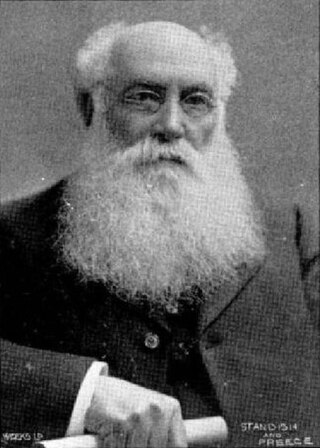
Samuel Charles Farr was a 19th-century builder and architect in Christchurch, New Zealand. He intended to emigrate from England to Auckland, but significant shipping problems saw him end up in Akaroa in 1850 instead. From 1862, he lived in Christchurch. Farr has a number of firsts against his name: the first marriage in Canterbury, he designed Akaroa's first church, designed New Zealand's first iron verandahs, and he started Sunday schools in Canterbury. As a leading member of the Acclimatisation Society, he stocked almost every lake and river in Canterbury with fish and was instrumental in introducing the bumblebee to New Zealand. His most notable building was Cranmer Court, the former Normal School, in the Christchurch Central City; this building was demolished following the February 2011 Christchurch earthquake.

The Westpac Canterbury Centre was a landmark tower on the corner of High Street and Cashel Street in the center of Christchurch, New Zealand. Prior to the February 2011 earthquake, it was considered the 9th tallest building in Christchurch, standing at 55 metres tall.

Container Mall was a temporary mall built from shipping containers in Christchurch Central City, New Zealand. It was a response to the 22 February 2011 Christchurch earthquake, which destroyed most buildings in City Mall, and resulted in the central city being cordoned off from public access while buildings were being demolished. Initially considered a short-term response to the lack of permanent buildings, Re:START was popular with locals and tourists alike and remained open for business until January 2018.
John Anderson was a Scottish-born New Zealand engineer. He played rugby union for West of Scotland during his time in Scotland for his education and represented Scotland internationally. He lived in New Zealand from infancy and together with his brother, took over his father's company. The company flourished under their guidance and became one of New Zealand's largest builder of bridges for roads and rail.

The Community of the Sacred Name is a community of nuns in the Anglican Church in Aotearoa New Zealand and Polynesia. CSN Sisters currently live in Christchurch, Ashburton, Nukualofa and Suva. The former Motherhouse of the community including convent, chapel and novitiate stood in the central city of Christchurch, New Zealand.



















